The Best Souvenirs from Japan: A Comprehensive List
Japan captures the heart of every visitor with its bustling cities, tranquil countryside, historical attractions, and rich culture. Naturally, you’ll want to bring a piece of this amazing country back home with you. Here’s a complete list of the best souvenirs from Japan to help you plan your shopping trips. From cool accessories to mouth-watering goodies, traditional arts and crafts to anime merchandise, there’s something for every interest and every budget.
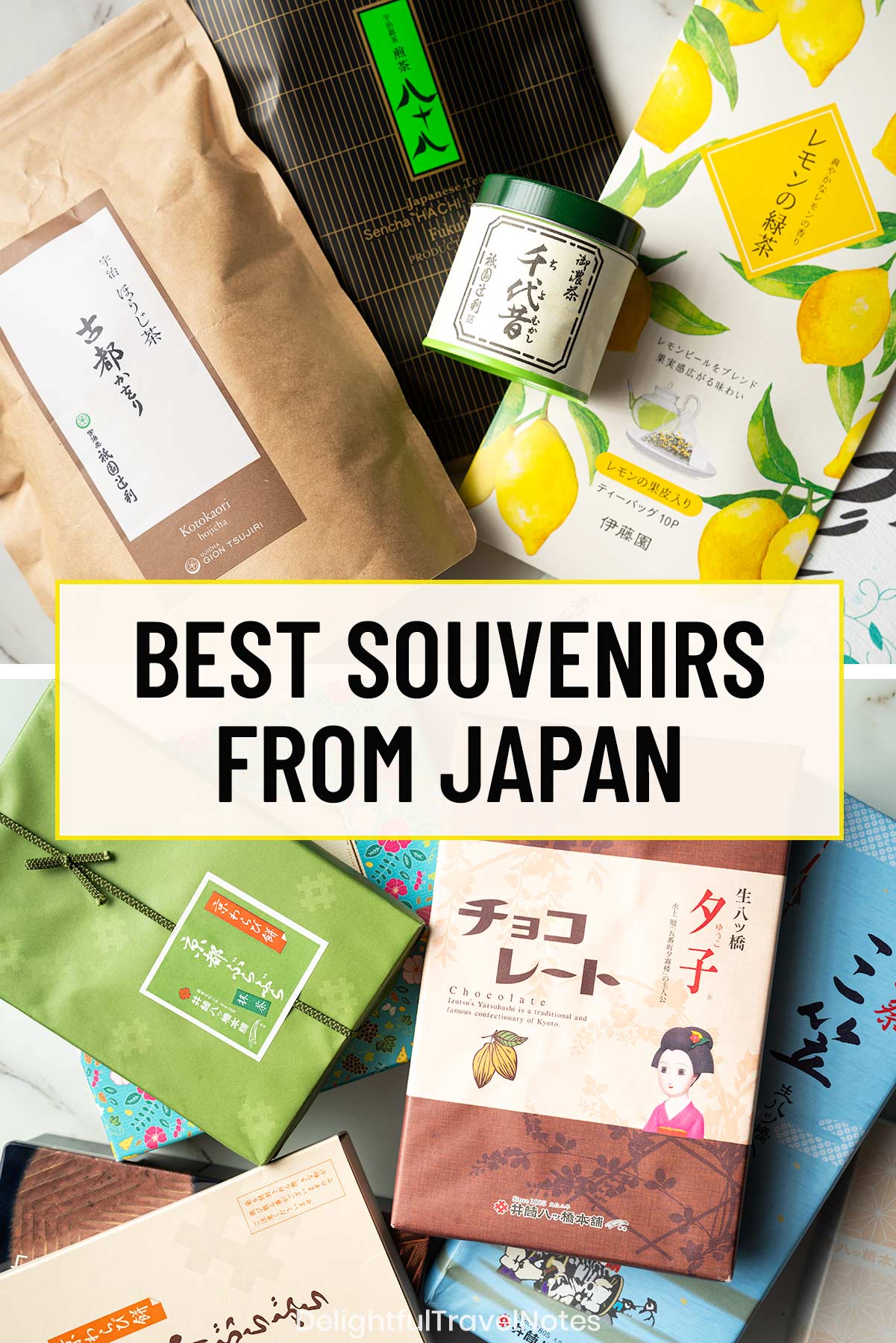
Souvenirs from Japan showcase the country’s meticulous attention to detail and quality, as well as its rich heritage and culture. In every part of the country, you’re sure to find memorable keepsakes that resonate with your travel experiences in Japan.
Whether you’re looking for something to enjoy at home or gifts for families and friends, our list has it all. Please keep reading to explore the best souvenirs to help you remember your trip to Japan and where to buy them.
Edible Souvenirs
For food lovers, Japan is a paradise! Extensive choices of edible souvenirs from Japan will allow you to revisit the flavors of your journey or introduce the taste of Japan to your loved ones after you’ve returned home.
Sweets
Traditional Japanese confections, known as “wagashi,” are created to satisfy both the taste buds and the eyes. They perfectly complement a cup of green tea. Make sure to check the expiry date since a lot of traditional sweets sold as souvenirs are freshly made and have a short shelf-life.
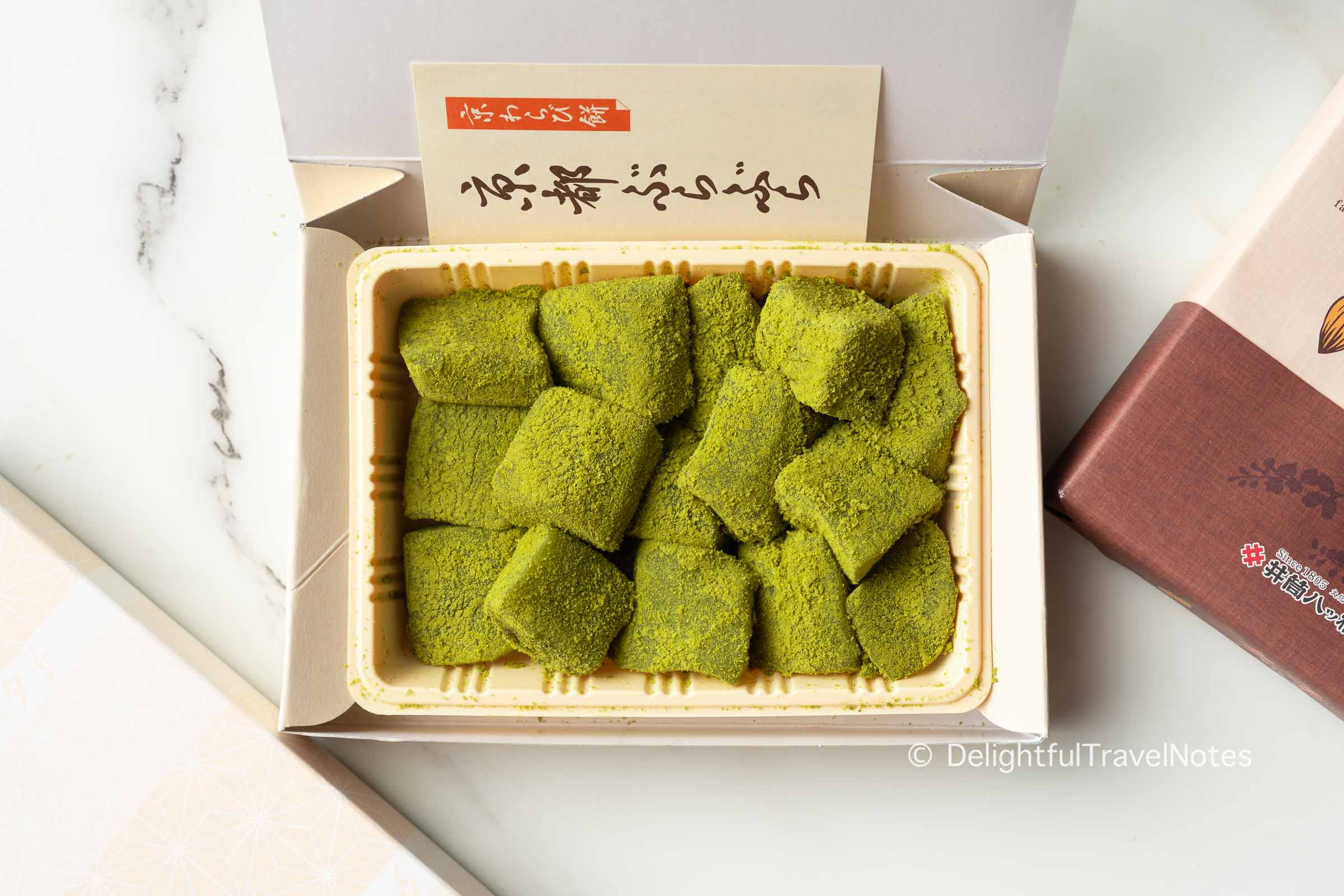
Mochi, a sweet treat made from glutinous rice, is one of the most well-known types of wagashi. It is available in a multitude of flavors and fillings. My most favorite type is warabi mochi.
Yatsuhashi is another wagashi that should not be missed. This humble-looking treat is one of the specialties of Kyoto and can be found at many traditional sweet shops in the city such as Izutsu. Our colleagues at home also love the chocolate yatsuhashi from Godiva. Mochi and yatsuhashi are just two examples of many wagashi in Japan.
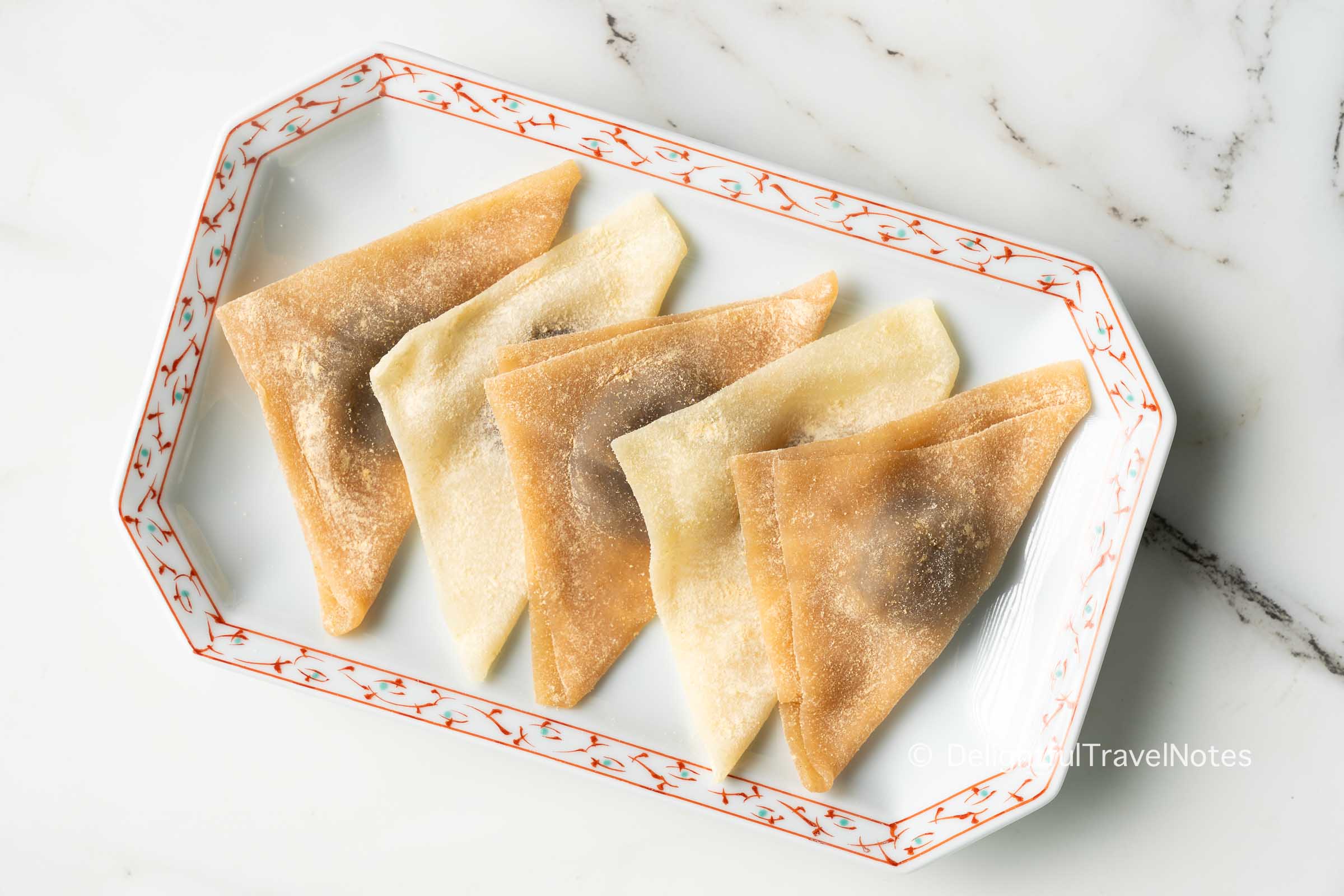
We also love modern Japanese sweets such as cookies (especially those with matcha flavors), nama chocolate and castella. We highly recommend checking out the basement floor in department stores to browse the wide range of quality modern and traditional sweets to buy as souvenirs.
Snacks
Japanese snacks have a fascinating variety of flavors, from sweet and salty to spicy. Some snacks are influenced by traditional Japanese cuisine, while others put a twist on Western flavors.
A classic snack is senbei, or rice crackers. They are available in many sizes, shapes, and flavors. Another popular snack is wasabi peas, a crunchy treat that packs a punch with its spicy horseradish flavor. You can find these snacks in supermarkets or convenience stores around Japan.
No snack list would be complete without mentioning Japan’s unique KitKat flavors, such as matcha, strawberry, and peach. These can be found in supermarkets, Don Quijote stores, or some KitKat Chocolatory shops in several large cities. We also saw matcha Kit Kat at airport duty-free shops.
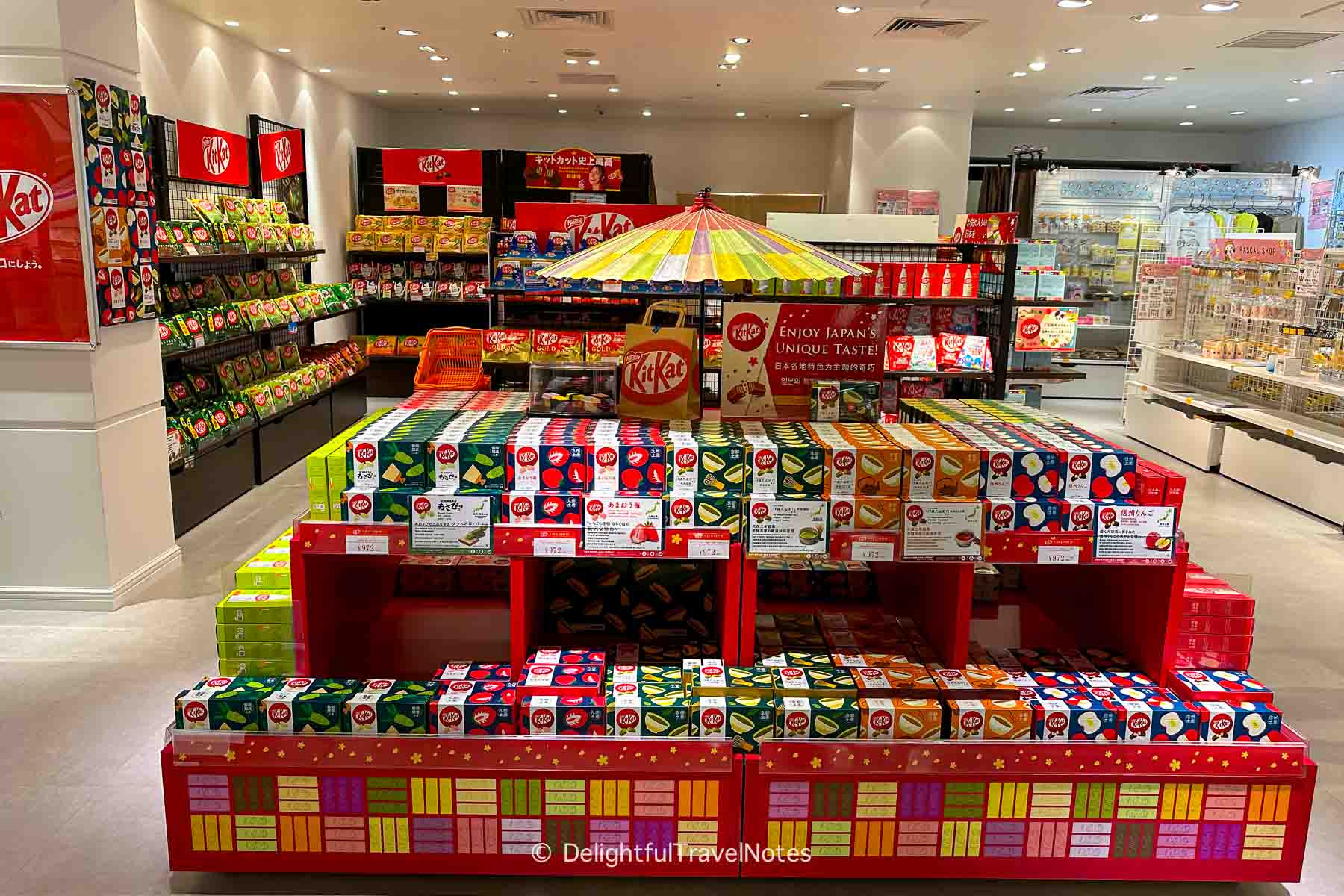
Tea
Tea is an integral part of Japanese culture, with its presence in tea ceremonies as well as at meal times. Bringing home some high-quality tea from Japan will let you immerse in the culture every time you brew a cup.
For high-quality tea, consider visiting specialty tea shops such as Tsujiri, Ippodo and Fukujuen. Many department stores also have a tea section where you can find a wide variety of excellent teas.
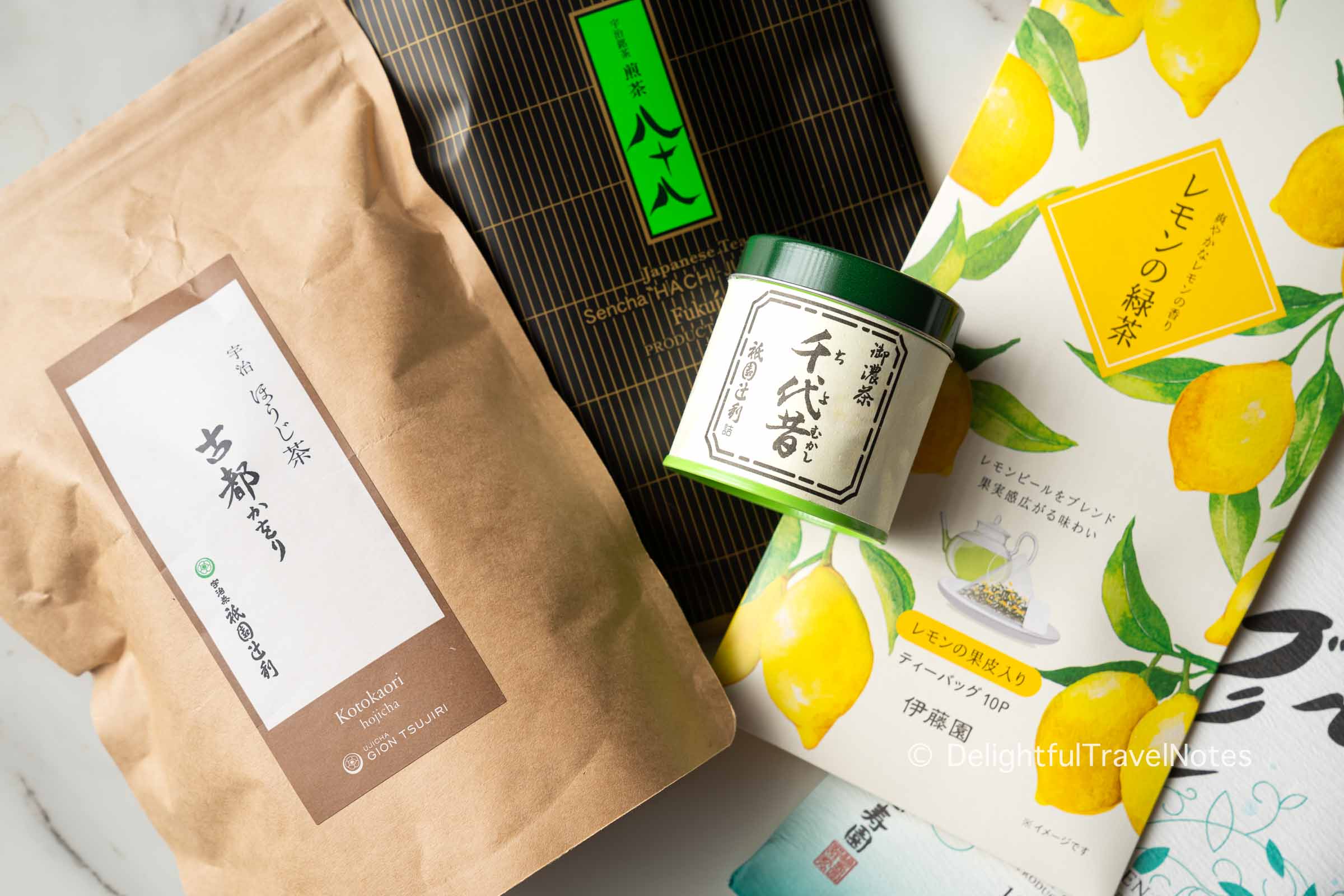
Green Tea
Green tea is the most common type of tea in Japan. There are several types, each with a unique flavor profile.
- Gyokuro is shaded green tea and it is considered one of the finest teas with a sweet flavor and bright green color. Gyokuro is expensive, but I highly recommend trying it.
- Sencha is the most popular green tea, characterized by its refreshing flavor and slight bitterness.
- Matcha is a powdered green tea traditionally consumed in Japanese tea ceremonies. It is well-known for its vibrant color and rich taste. There are different matcha grades, and the more expensive ones typically have a more pronounced umami flavor and sweeter taste.
Other Teas
Hojicha is a roasted green tea with a distinct reddish-brown color. It has a unique, toasty flavor with almost no bitterness.
Genmaicha is a blend of green tea with roasted brown rice. The rice gives it a warm, nutty flavor that complements the grassy note of the tea.
Tea Accessories
For a more complete tea experience, you can also consider picking up some traditional tea accessories, such as a matcha whisk (chasen), tea caddy, or a cast-iron teapot.
Arts, Crafts and Home Decor
Japan is renowned for its arts and crafts, which represent centuries of tradition. From intricate dolls to beautiful woodblock prints, buying these pieces of craftsmanship is a delightful way to carry a piece of Japan’s cultural heritage back home.
Dolls
Japanese dolls are one of the unique souvenirs to bring home from Japan. While some may perceive dolls primarily as children’s toys, Japanese dolls are also considered works of art. They range from simple wooden dolls to intricately crafted figures, complete with elaborate kimono and accessories.
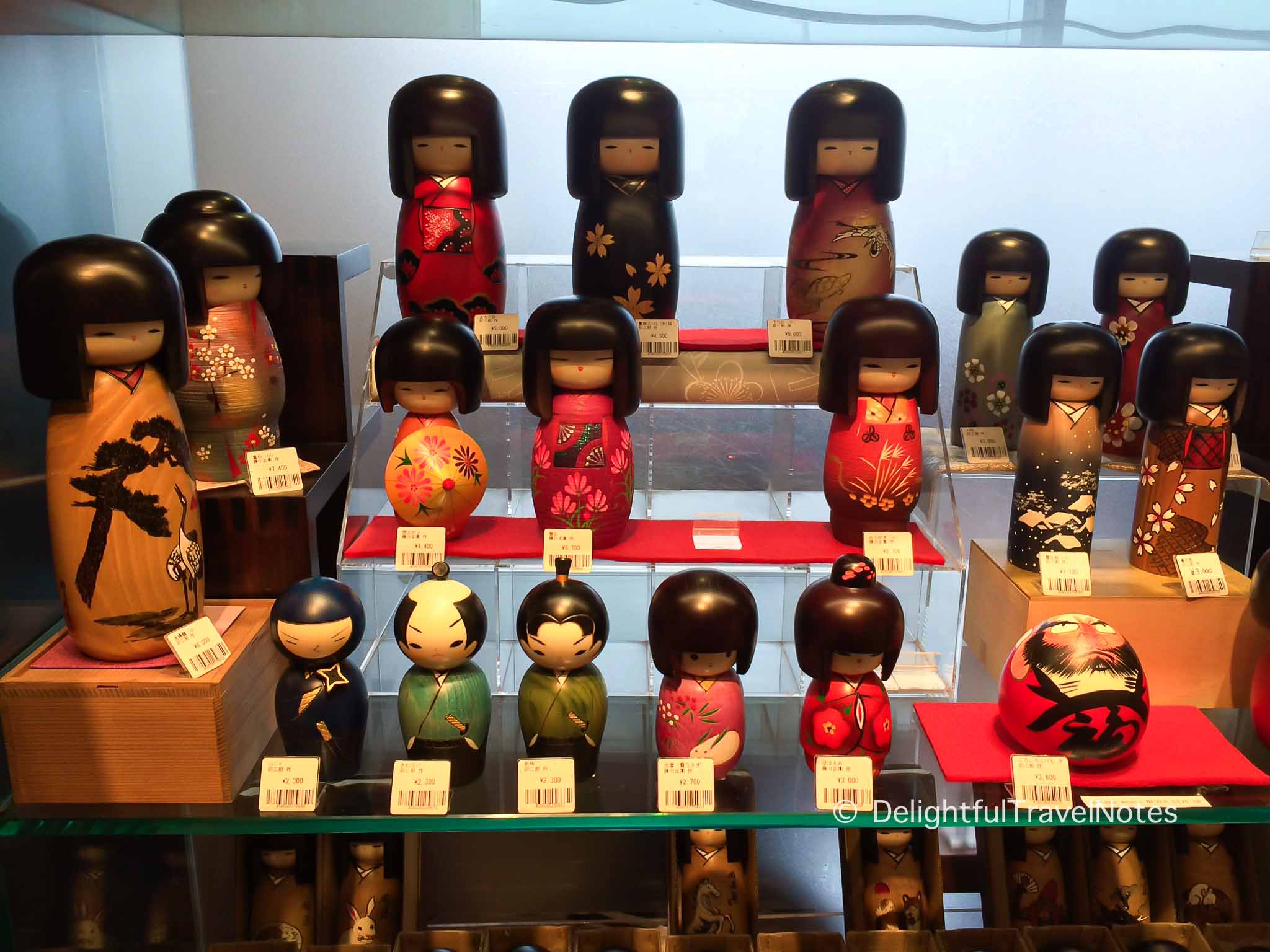
Different styles of dolls represent different aspects of Japanese culture and history. Kokeshi are handmade wooden dolls with no arms or legs that have been crafted as a toy for children for more than 150 years. Daruma dolls are believed to bring good luck and perseverance.
Woodblock Prints
Woodblock prints, or ‘ukiyo-e’, are a form of Japanese art that gained popularity in the Edo period. These prints feature various themes, notably beautiful landscapes, famous landmarks and scenes of everyday life.
To make ukiyo-e, artists first carve the design into a wooden block, then apply ink and press it onto paper to create the print. You can frame and hang them to add a touch of Japanese elegance to your home decor.
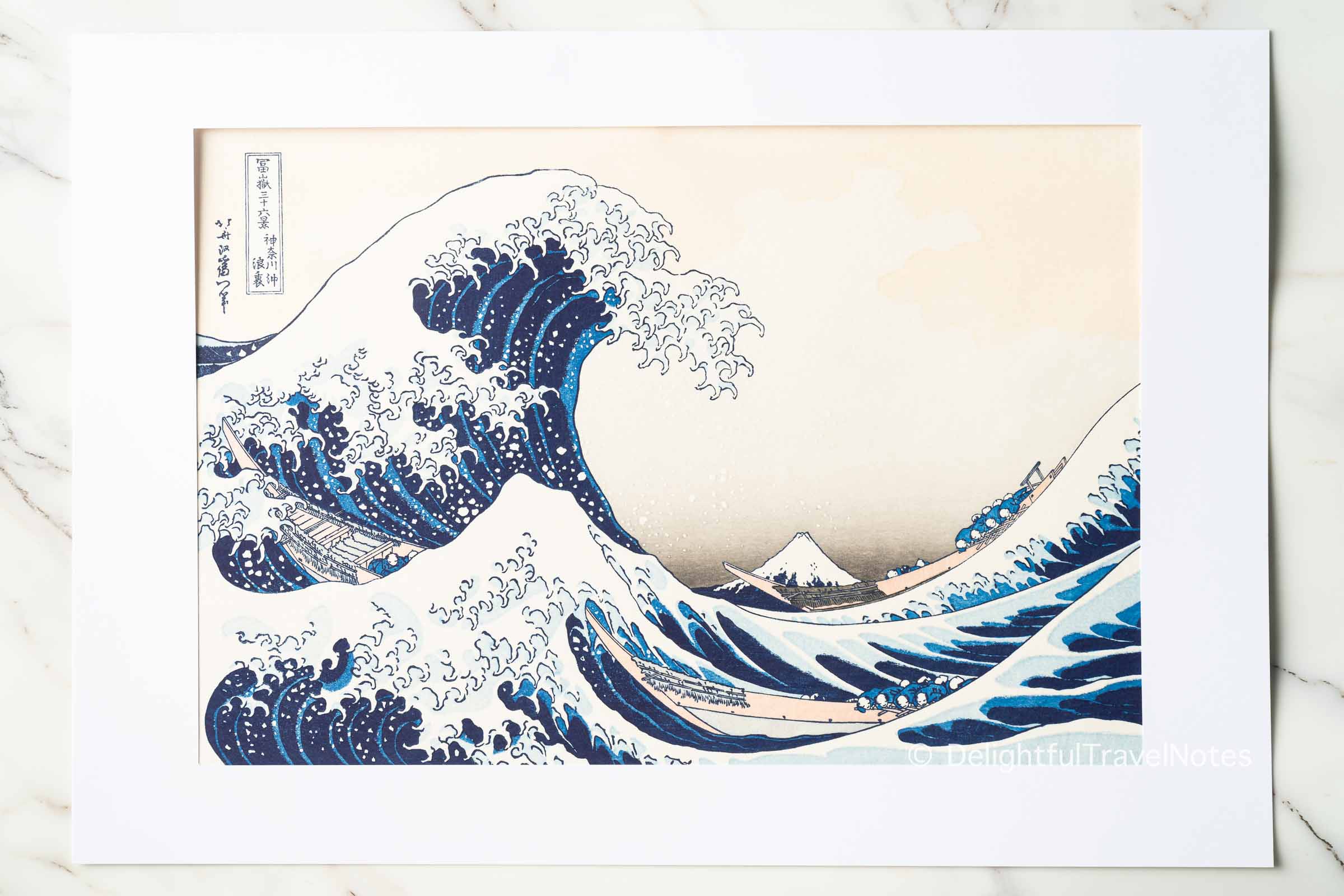
You can find original ukiyo-e in specialized art galleries, though these can be quite expensive. For a more affordable option, consider buying reproductions, which are widely available in art shops, souvenir stores, and museum gift shops across Japan. We bought the one above at Tokyo National Museum gift shop for about 14,000 yen.
Pottery
Japanese pottery are world-renowned for its designs and quality. When buying pottery items (such as ceramic vases), remember to ensure they are packed securely for transportation to prevent damage. Many stores can also ship your purchases directly to your home address.
Tableware
Japanese tableware makes excellent souvenirs, not just for their practical use but also as stylish additions to your dinnerware collection. Items such as ceramics, lacquerware, and chopsticks combine functionality with artistry, showing off the craftsmanship Japan is famous for. Eating is also a visual experience, so beautiful tableware will undoubtedly enhance your home dining experience.
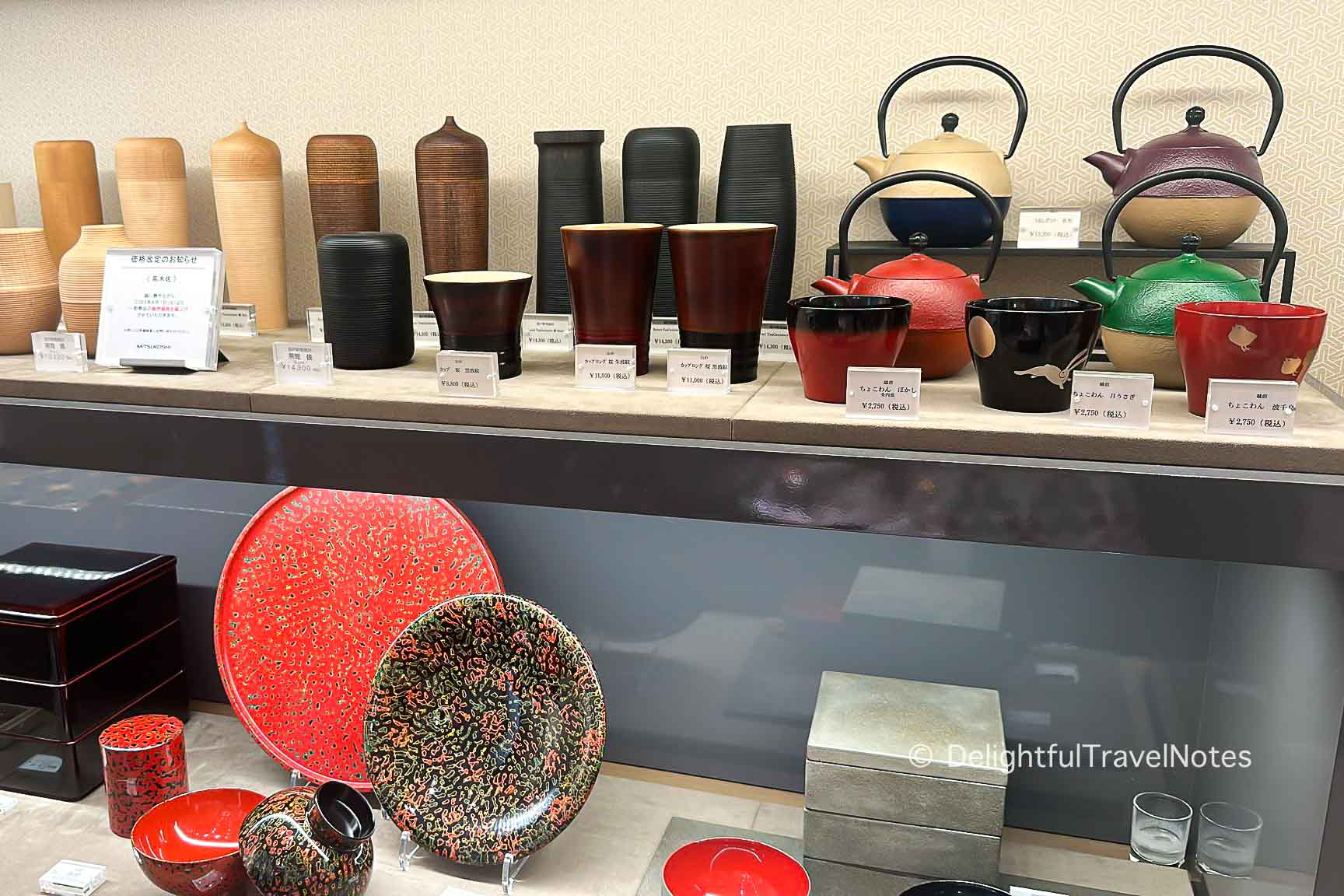
Ceramics
The range of ceramics you can bring home includes a variety of plates, bowls, cups, and pots. Each region in Japan has its own distinctive style of ceramics, making this a particularly diverse category of souvenirs. For example, Kutani ware from Ishikawa is famous for their use of vibrant colors – don’t forget to bring back some when you visit Kanazawa.
Ceramic items can be fragile, so you should make sure they are wrapped carefully for transportation. Many shops will offer special packaging for tourists to keep these items safe during air travel.
You can find beautiful ceramic tableware in pottery towns. Kappabashi Street in Tokyo offers a great variety of ceramics (as well as kitchenware and knives). For a more curated collection, you can visit department stores such as Mitsukoshi or Takashimaya.
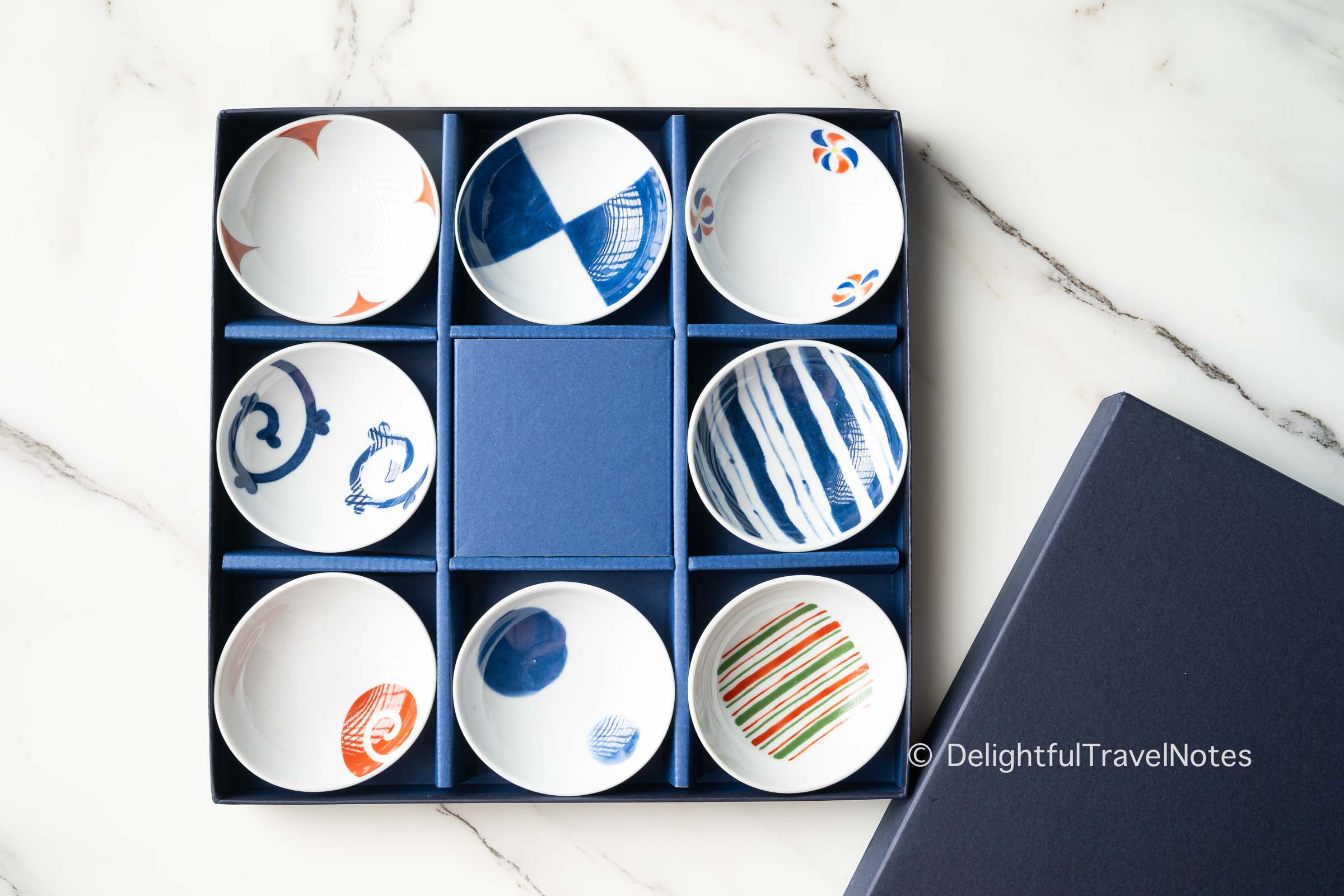
Plates and Bowls
Japanese plates and bowls can be found in various sizes and shapes. There are many designs to choose, from traditional motifs to more contemporary and minimalist styles.
Teacups and Tea Sets
Teacups may come individually or as part of a set with or without a teapot. Like plates and bowls, the design of these tea sets can vary greatly. You may notice a Japanese set of teacups for couples often has a smaller one (for the wife) and a larger one (for the husband).
Sake Sets
For those who enjoy traditional Japanese rice wine, ceramic sake sets can be a wonderful souvenir. A typical sake set includes a small flask and several cups. They also come in various designs.
Lacquerware
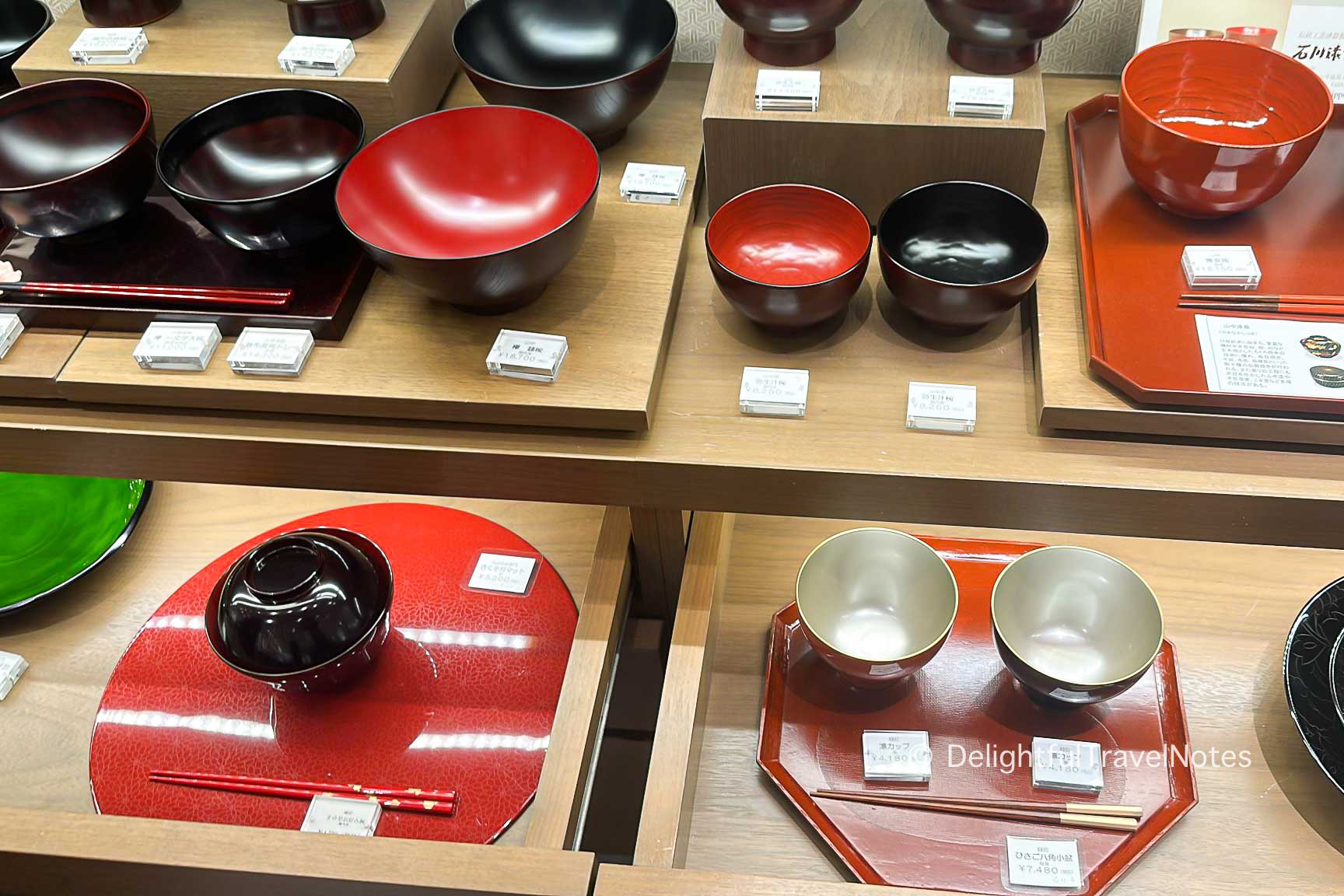
Japanese lacquered bowls and trays, highly prized for their finish and intricate designs, can elevate any dining experience. Besides tableware, lacquered products also include decorative boxes and jewelry cases. Department stores such as Takashimaya and Mitsukoshi usually carry a good selection of lacquerware.
If you make Japanese soups at home, we highly recommend buying some lacquered bowls for serving. The wood beneath the lacquer acts as an effective insulator and helps retain the heat very well. Below is our homemade suimono soup served in the lacquered bowls we bought at Takashimaya.
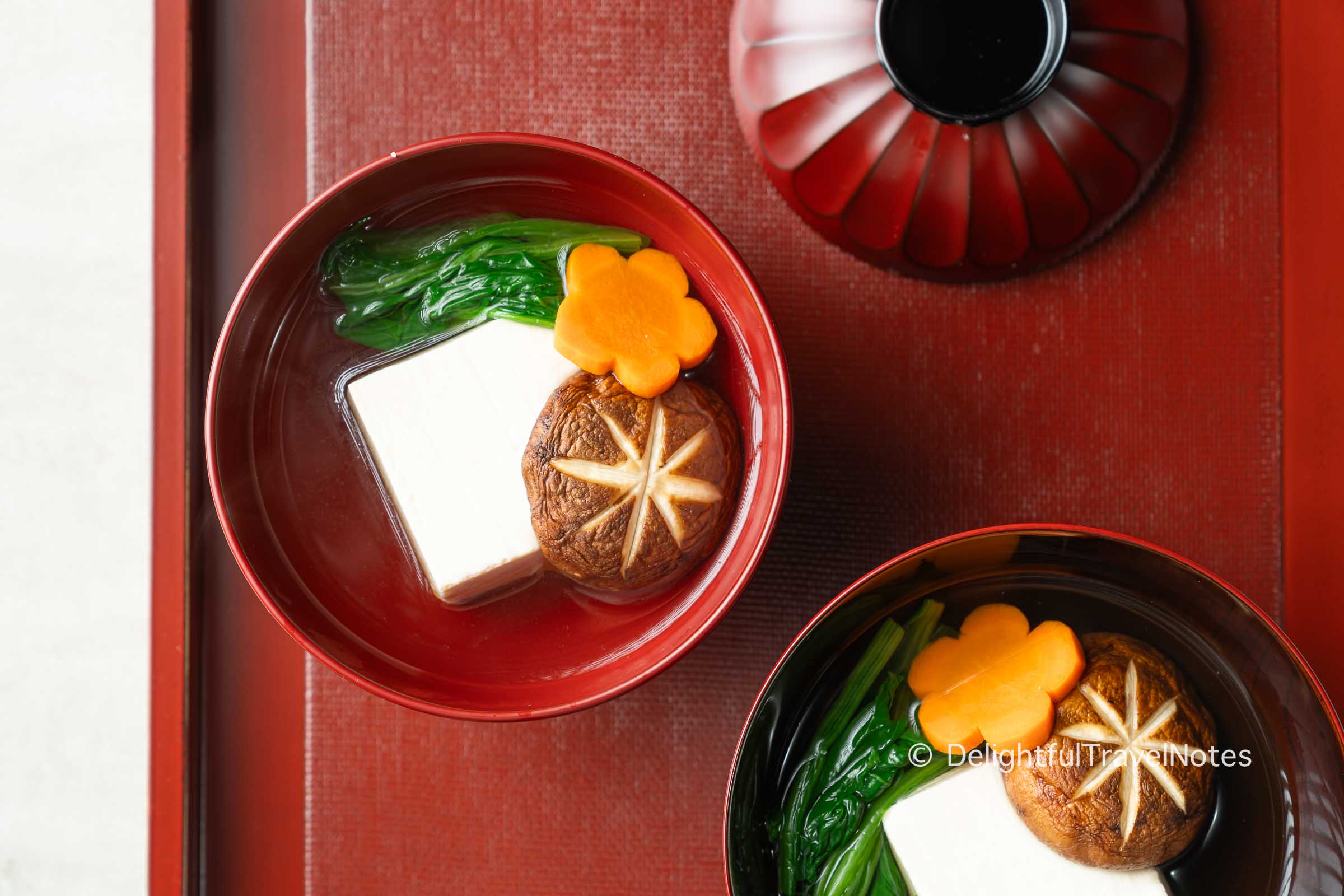
Chopsticks
Chopsticks make for a fantastic lightweight souvenir from Japan. From affordable wooden pairs to those crafted from high-quality lacquered wood, there’s a pair for every budget. They come in many colors and patterns.
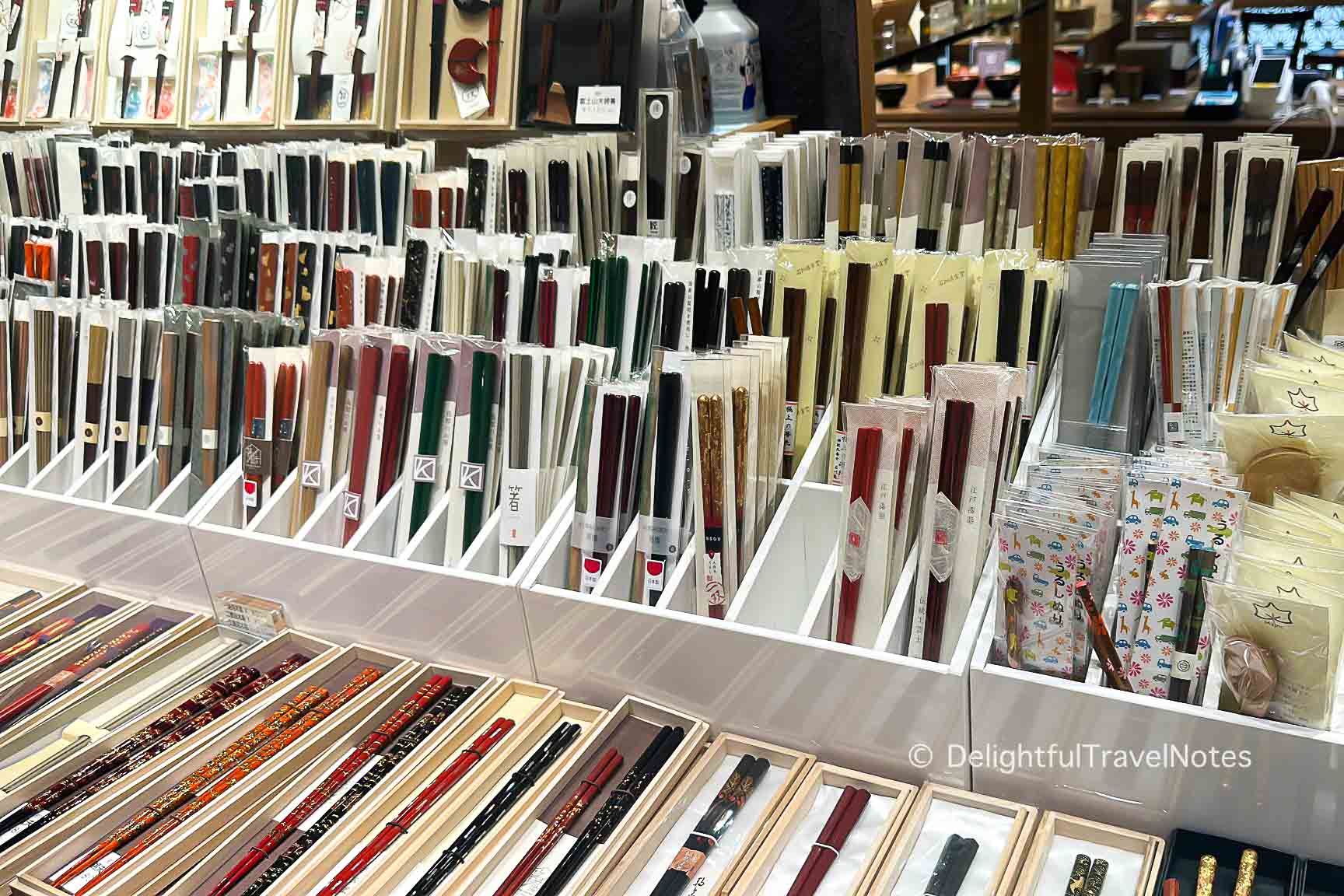
One thing to note that not all chopsticks can be put into the dishwasher, especially the lacquered ones (I do have some lacquered pairs that are dishwasher safe). Make sure you read the labels or ask the shopkeepers about this.
Kitchen and Cooking Accessories
Knives
One of the popular kitchen items to buy as souvenirs from Japan is knives. Japanese knives are renowned for their exceptional quality and craftsmanship. There are different types of Japanese knives, so consider your cooking style and what you’ll use it for to choose the right one. For example, I prefer nakiri knives over santoku knives.
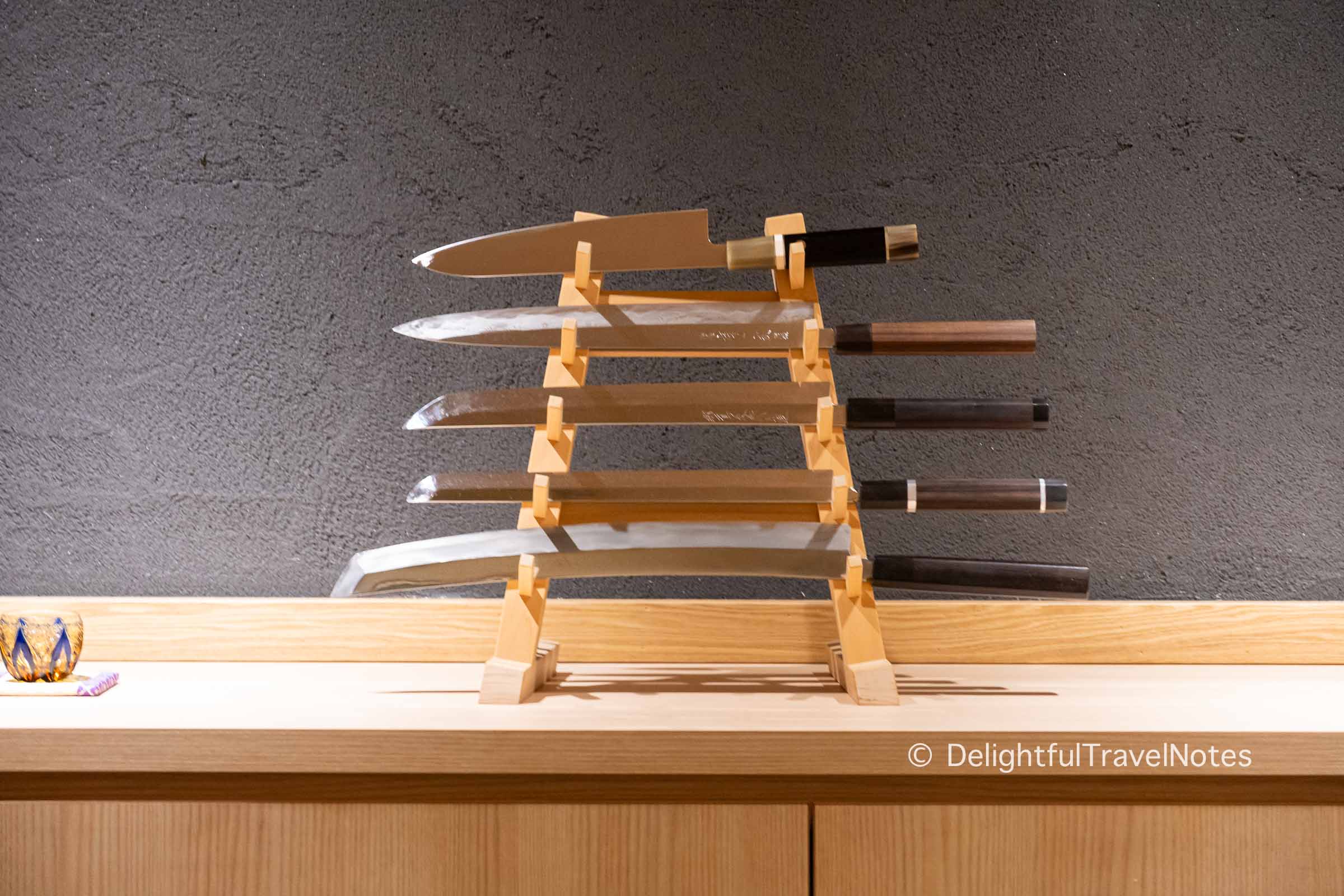
Cookware and Appliances
You can also consider buying kitchen appliances and cookware (such as takoyaki pan, tamagoyaki pan, rice cooker, donabe, electric hotpot) in Japan. Before purchasing these items, keep in mind the space and weight they will occupy in your luggage. Also pay attention to the voltage and plug types when choosing an electric appliance.
Cooking Utensils
Japanese cooking utensils such as graters for wasabi or ginger, and sushi making kits are all great options. They’re available in most homeware stores and markets.
Spiritual and Good Luck Items
In Japanese culture, certain items are believed to bring good fortune or protection to their owners. Spiritual and good luck items, such as omamori (amulets), lucky cats, and goshuincho, carry cultural significance and make unique and meaningful souvenirs.
Goshuincho
A goshuincho is a stamp book that travelers fill with stamps and calligraphy (called “goshuin”) from each temple or shrine they visit. Goshuincho will be a beautiful reminder of your journey across Japan. Here’s my complete guide on what is a goshuin and how to collect goshuin.
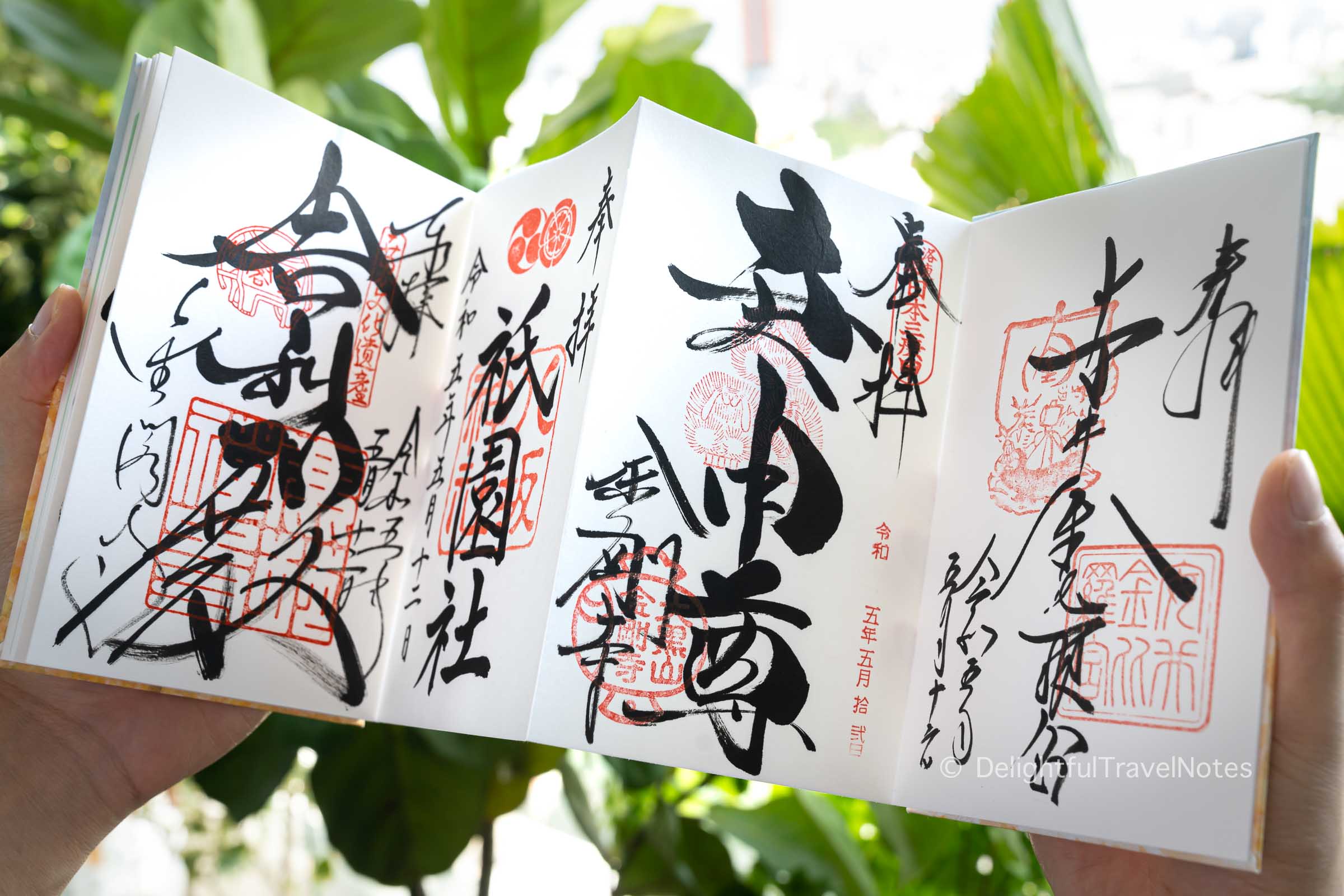
Omamori
Omamori are Japanese amulets sold at Shinto shrines and Buddhist temples. They are thought to provide various forms of luck or protection. You can find omamori for good health, success in studies, safe travels, and more. Each shrine or temple will have its unique omamori, making them a special souvenir to remember your visit.
Lucky Cat
The maneki-neko, or “beckoning cat,” is a common talisman believed to bring good luck and fortune to its owner. Typically, you’ll see these charming cats waving from shop windows or restaurant counters.

Kimono and Yukata
Kimono is a traditional Japanese garment with a rich history and deep cultural significance. It’s often made from silk and features a wide variety of colors and patterns. The style, color, and fabric can signify the wearer’s marital status, age, and the formality of the occasion.
Yukata is a casual version of kimono, traditionally worn during summer festivals known as matsuri or at ryokan (Japanese inns). Yukata is typically made of cotton, making it lightweight and breathable, ideal for hot summer months.

Purchasing a yukata or kimono can be a unique and personal way to remember your time in Japan. You can find yukata and kimono in various places throughout Japan, from specialized stores to department stores and even some souvenir shops.
Manga and Anime Merchandise
Japan is the birthplace of manga and anime, and it’s no surprise that the country is a paradise for enthusiasts. From manga volumes and anime DVDs to figurines, clothing, toys, and other themed merchandise, these items are great souvenirs for fans.
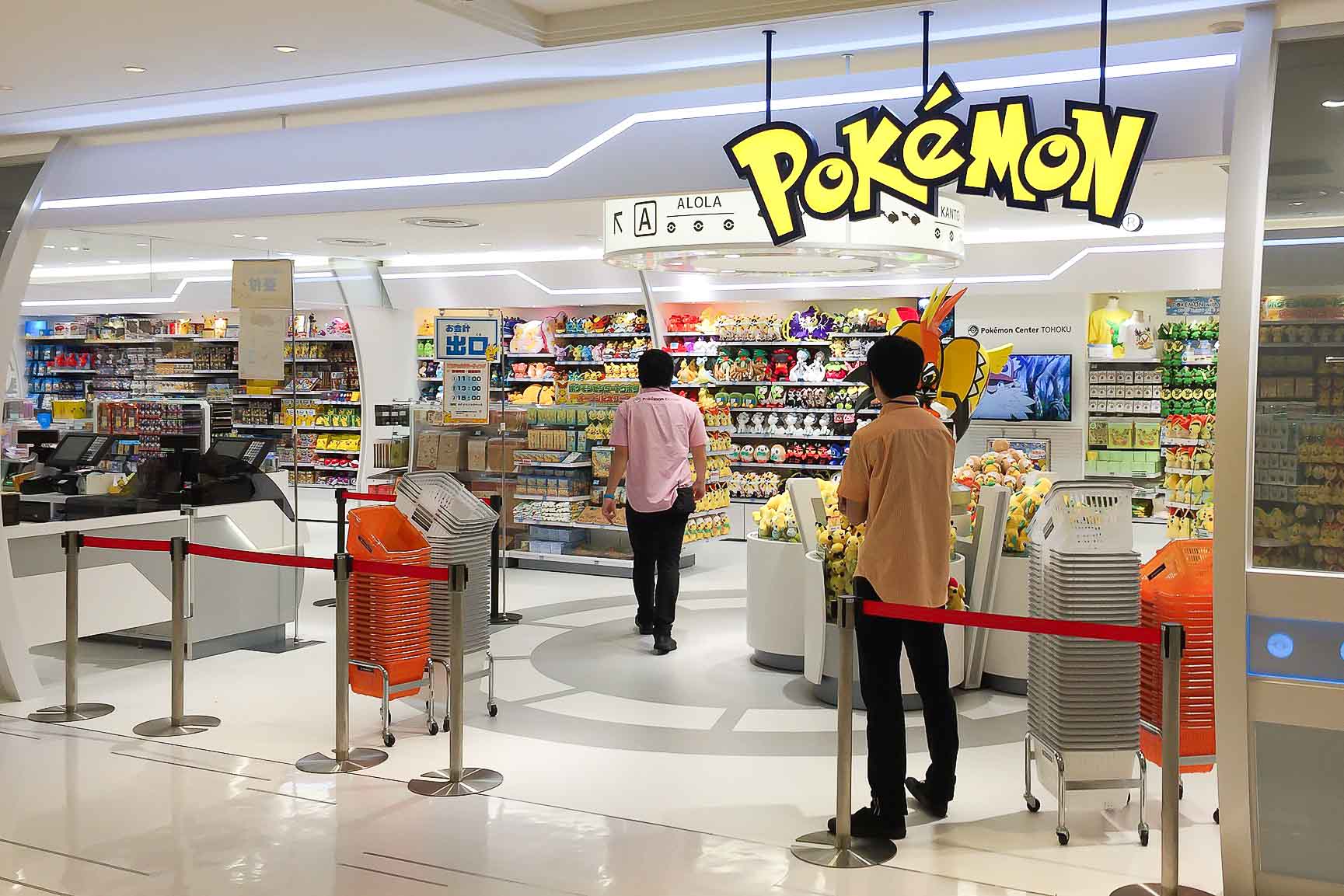
In Tokyo, Akihabara and Nakano Broadway are two well-known stops for manga, anime and video game fans. You can also visit stores such as Pokémon Centers, Nintendo stores, and JUMP shops across Japan for merchandise. Though I’m not a serious fan anymore, I was quite tempted to bring home some cute stuffed pokémon from the Pokémon Center in Shibuya Parco.
Beauty and Personal Care Items
Japanese beauty and personal care items are known for their quality, innovation, and the remarkable results they deliver. They are excellent souvenirs that allow you to bring a bit of Japan into your daily routine. They can also be great gifts for families and friends.
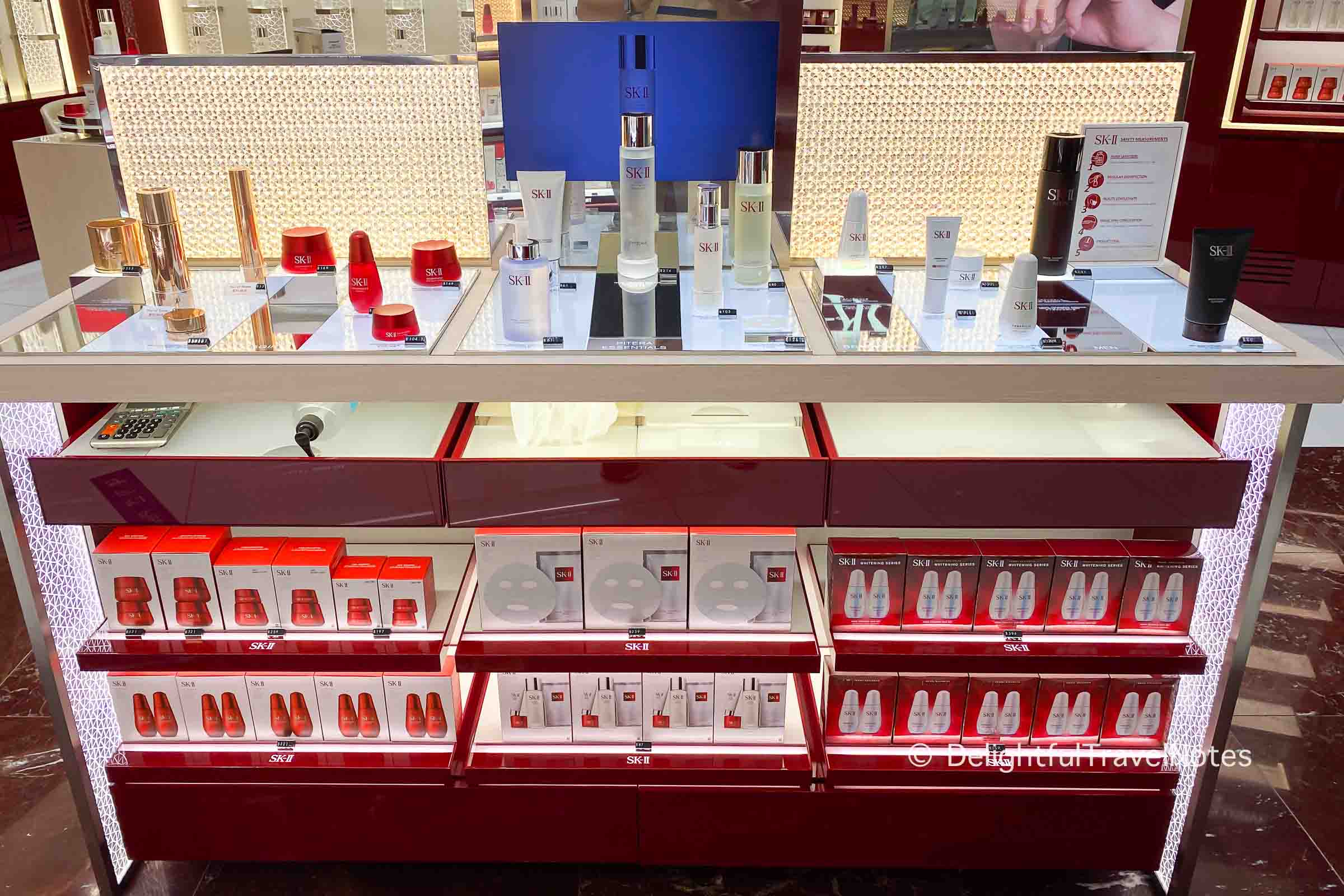
Many Japanese skincare, makeup, and haircare products are recognized for their quality and variety. These products are readily available in drugstores, department stores, and dedicated beauty shops.
Japan also has a variety of unique personal care items such as cooling eye masks, relaxing foot patches, and heated pads for the back or shoulders. My parents always bring back heated pads from Japan since they find those pads to be more effective than what they can get at home.
Stationery
Japanese stationery items are other excellent, lightweight souvenirs you can easily bring home to use daily or gift to friends and families. Pens, notebooks, stickers, stamps, decorative tapes, cute erasers, or art supplies can be ideal souvenirs for students, artists, and stationery lovers. Those can be found in many major stationery stores, such as Tokyu Hands or Loft.
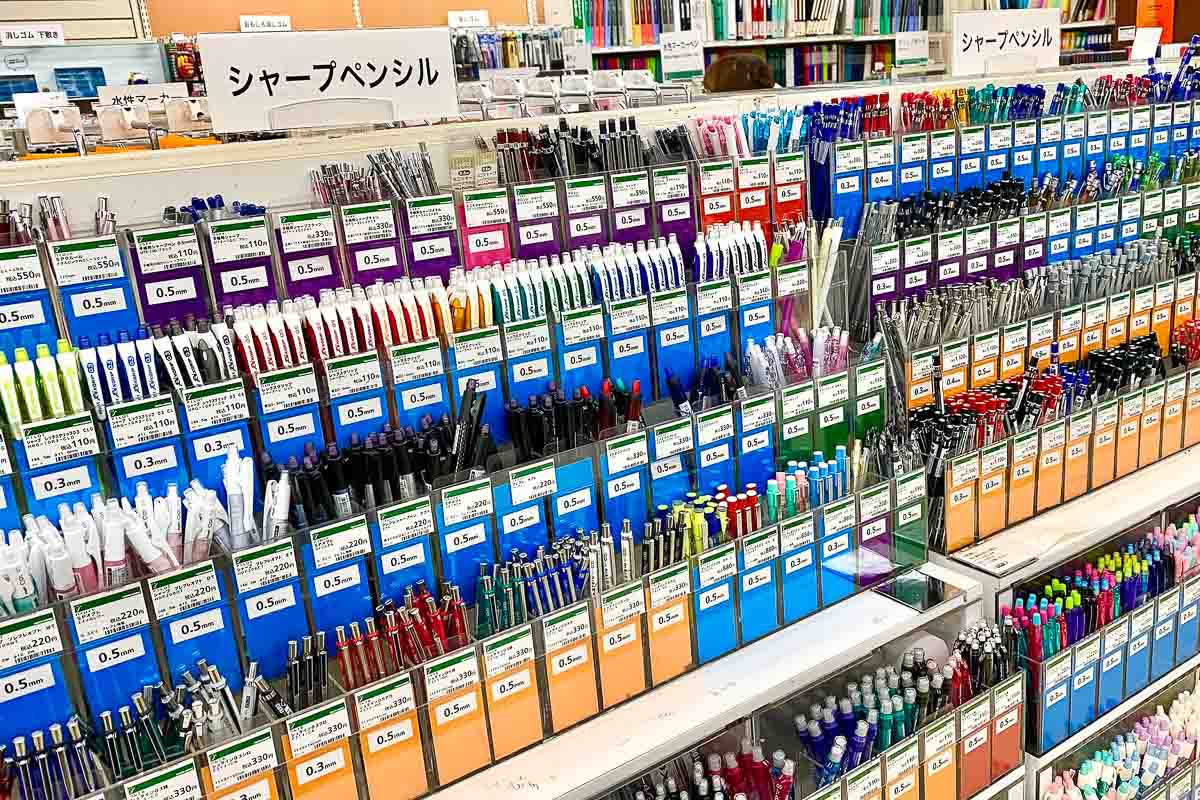
Wines and Spirits
Japanese wines and spirits are also souvenirs that will allow you to enjoy a taste of Japan at home. The choices are plentiful, ranging from traditional sake to contemporary whisky that has garnered international acclaim.
Also worth mentioning is umeshu, a delightful Japanese liqueur. This drink is made by steeping unripe ume (a type of plum) in alcohol and sugar. Its light, sweet, and slightly tart flavor profile makes it an accessible and enjoyable drink for many.
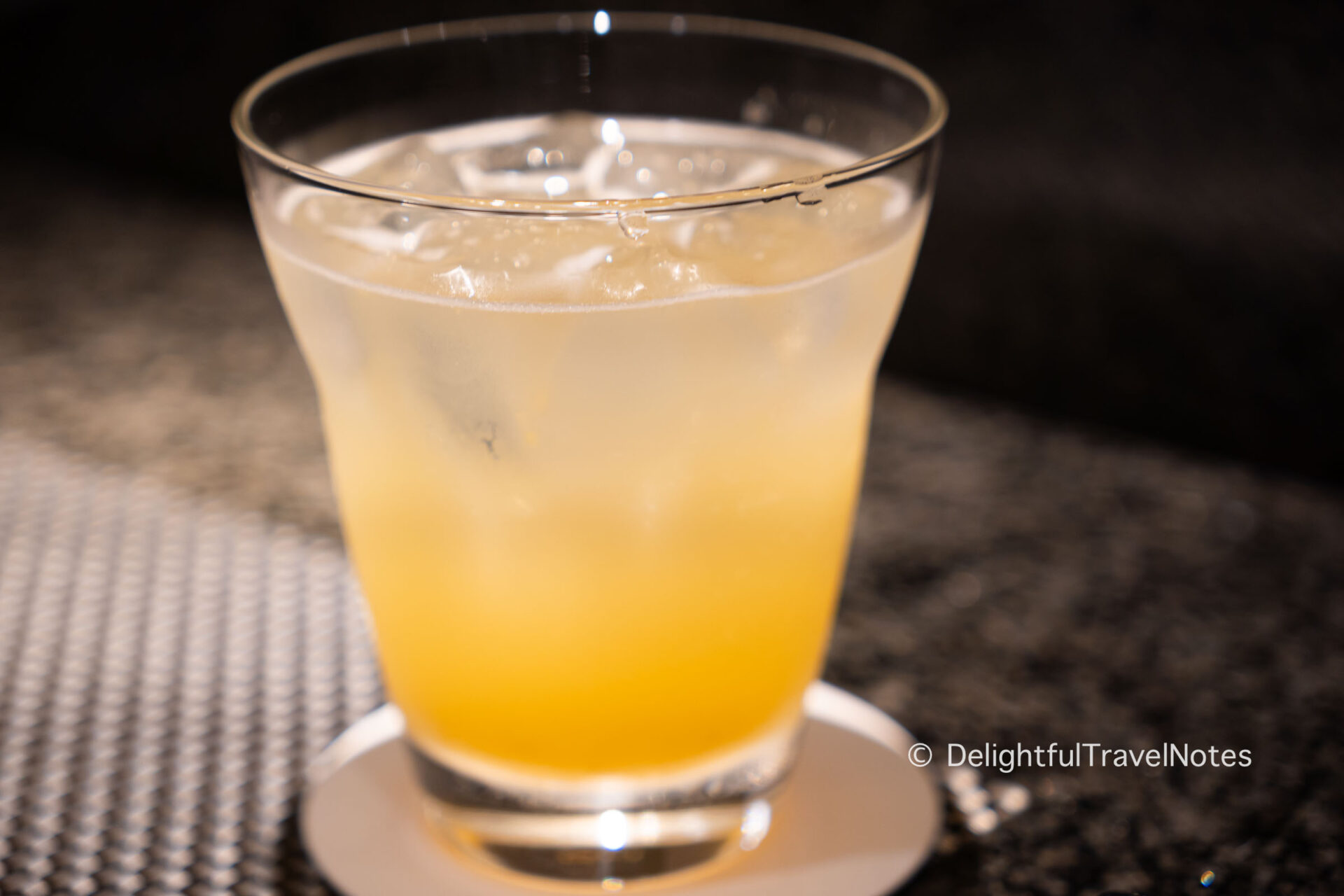
While items in this category make wonderful souvenirs, transporting them home can present a bit of a challenge due to the risk of breakage. You can consider buying them at airport duty-free shops to eliminate the worry about transportation.
Miscellaneous Souvenir Items
Apart from the categories mentioned above, there are countless other unique Japanese items you might want to bring back as souvenirs based on your interests. These can range from musical instruments, folding fans, origami paper and umbrellas to games, toys, and more. Also, don’t overlook magnets since the designs often depict charming sceneries or cultural elements which may serve as a reminder of your trip.
Personally, I’m a fan of Joe Hisaishi and Studio Ghibli, so I had to visit Yamaha Ginza store in Tokyo to bring back some piano sheet music books. The store has many instruments on display as well as a huge sheet music library, with collections ranging from classical music to J-pop and anime music.

Conclusion
Our comprehensive guide provides a complete overview of the diverse souvenir categories available in Japan. Throughout the list, we’ve also highlighted select items within each category, serving as examples of what you can expect to find. Each category still has many other items waiting to be discovered.
Whether you’re shopping for yourself or looking for thoughtful gifts for loved ones, the diversity of Japanese souvenirs ensures there’s something to satisfy every need! You may want to have a lot of room in your suitcase for souvenirs or bring an extra foldable/collapsible travel bag.

Explore More
The Thousand Kyoto Review: Wonderful Hotel Right Next To Kyoto Station
How To Plan An Amazing Trip to Kyoto (Beyond General Japan Travel Tips)
Top Crowded Attractions in Kyoto and How to Avoid the Masses